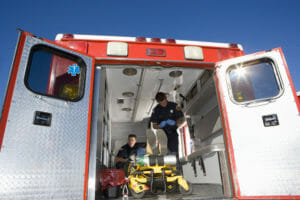
Incidents of Fatal Senior Work Fatalities
The BLS study found that for every 100,000 senior citizen workers (65 years of age or older), 9.4 died while at work. This is significant when compared to the fatalities of workplace death for electricians, which is 10.7. While the incidents of senior citizens workplace fatalities aren’t related to a particular industry, there are other reasons that could explain these numbers.
For one, more and more senior citizens are prolonging retirement meaning that there are more active in the workforce than ever before. Secondly, when an older person suffers a serious accident or even a slip and fall, the results are often more devastating than if the same injury occurred to a younger individual.
The 20 Most Dangerous Jobs in 2015
The BLS study also looked at the total number of workplace fatalities across all industries. In an article that appeared in Time Magazine, the 20 most dangerous jobs in 2015 were listed in order of the highest number of fatal injuries per 100,000 people. They were:
- Logging
- Fishers and related jobs
- Aircraft pilots and flight engineers
- Roofers
- Refuse and recyclable material collectors
- Structural iron and steel workers
- Truck drivers
- Farmers, ranchers
- Miscellaneous agricultural workers
- Electrical power-line installers and repairers
- Landscaping and grounds keeping workers
- Construction trades and extraction workers
- Construction laborers
- Grounds maintenance workers
- Taxi drivers and chauffeurs
- Maintenance and repair workers
- Mechanics, installers and repairers
- Police and sheriff’s patrol officers
- Construction equipment operators
- Electricians
Employers have a responsibility to take specific steps to ensure the safety of their employees. When workplace accidents occur that cause injury or even death, the employer can sometimes be held responsible for negligence. Regardless if the occupation is considered a dangerous job or not, a workplace injury attorney can help explain your options for recovering economic and non-economic damages after a catastrophic work accident.
References:
Johnson, D. (2017, January 10). The Most Dangerous Jobs in 2015. Retrieved January 17, 2017, from http://time.com/4624034/most-dangerous-jobs-2015/?xid=newsletter-brief
NATIONAL CENSUS OF FATAL OCCUPATIONAL INJURIES IN 2015. (2016, December 16). Retrieved January 17, 2017, from https://bls.gov/news.release/pdf/cfoi.pdf